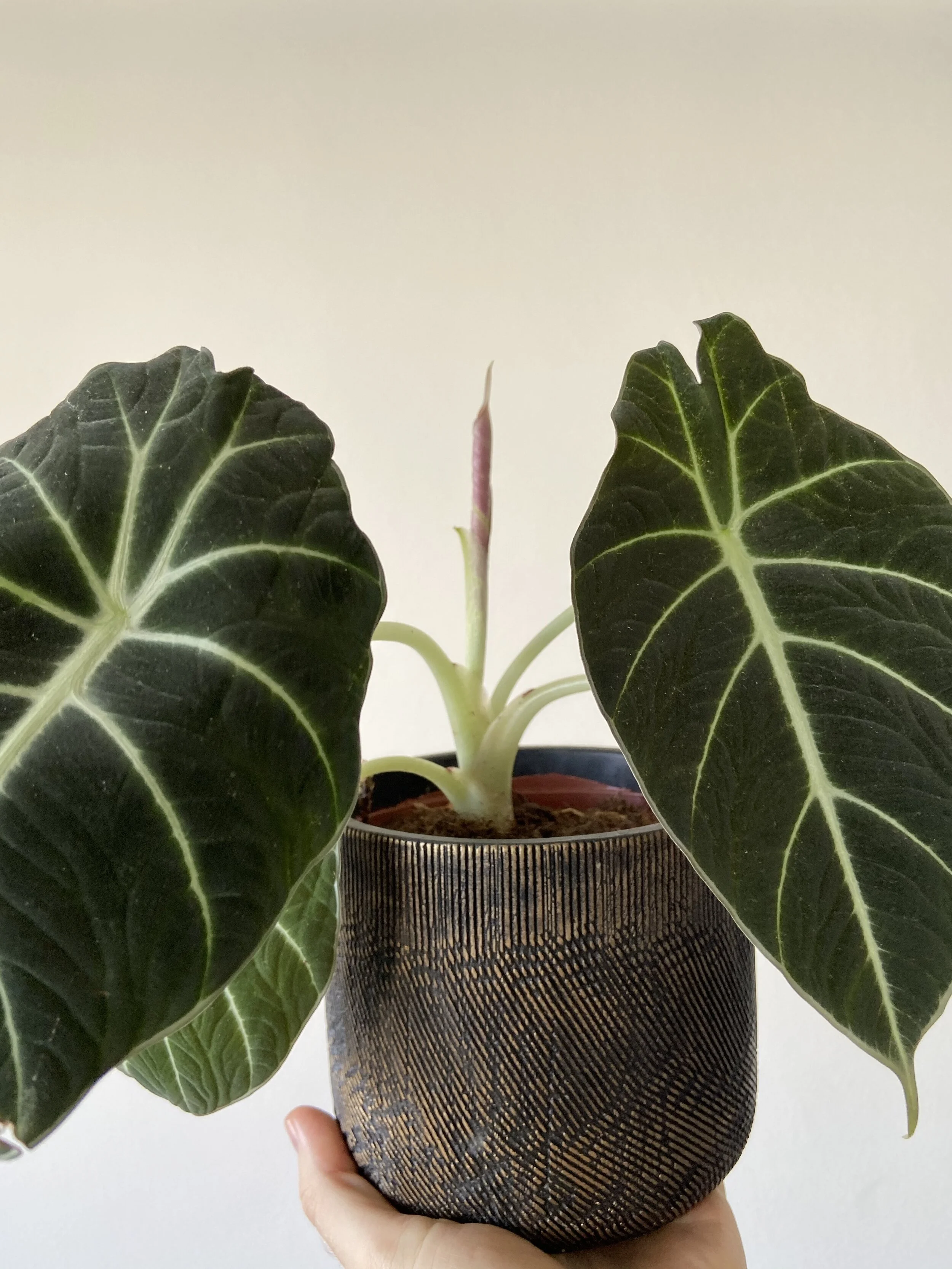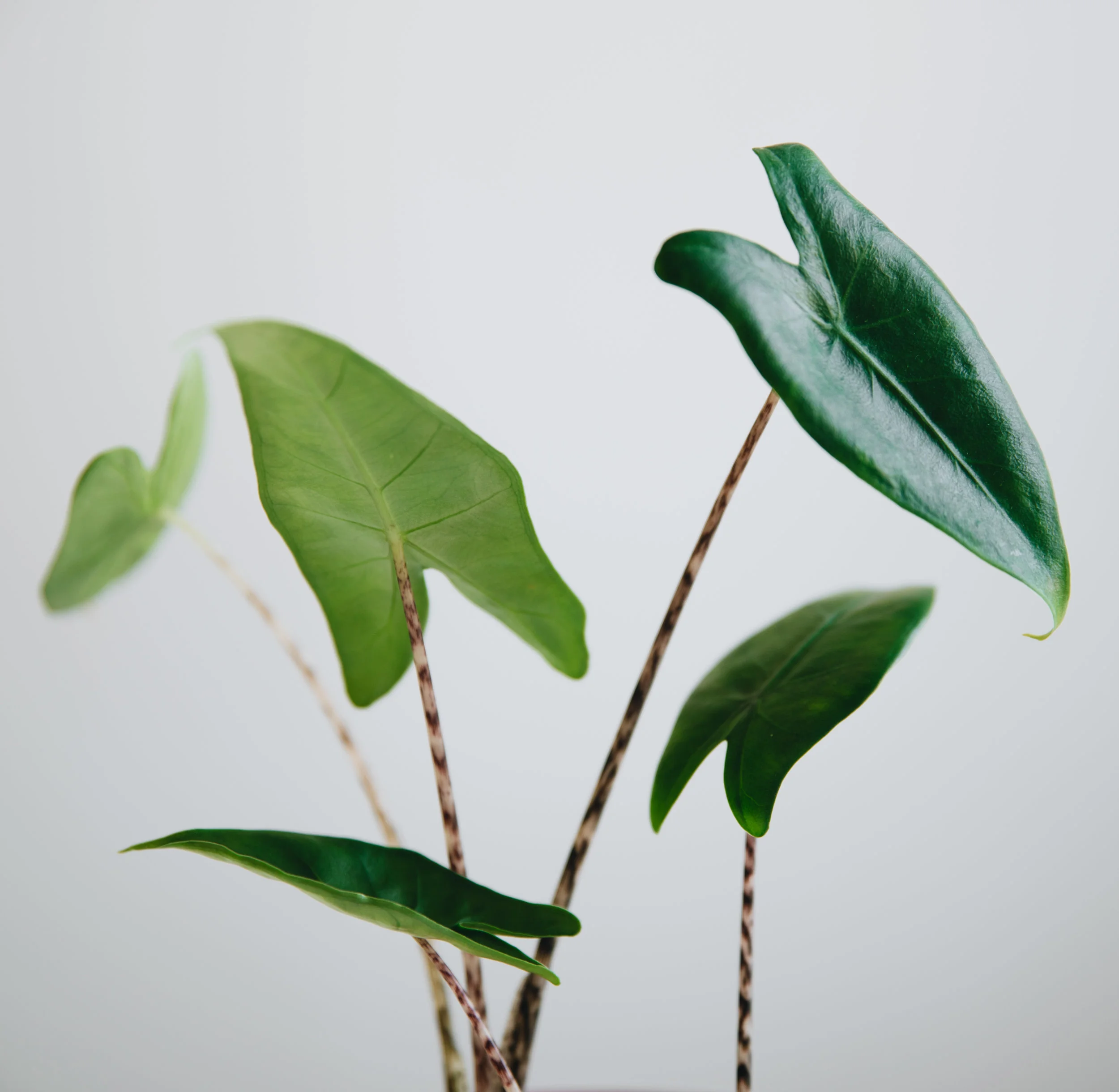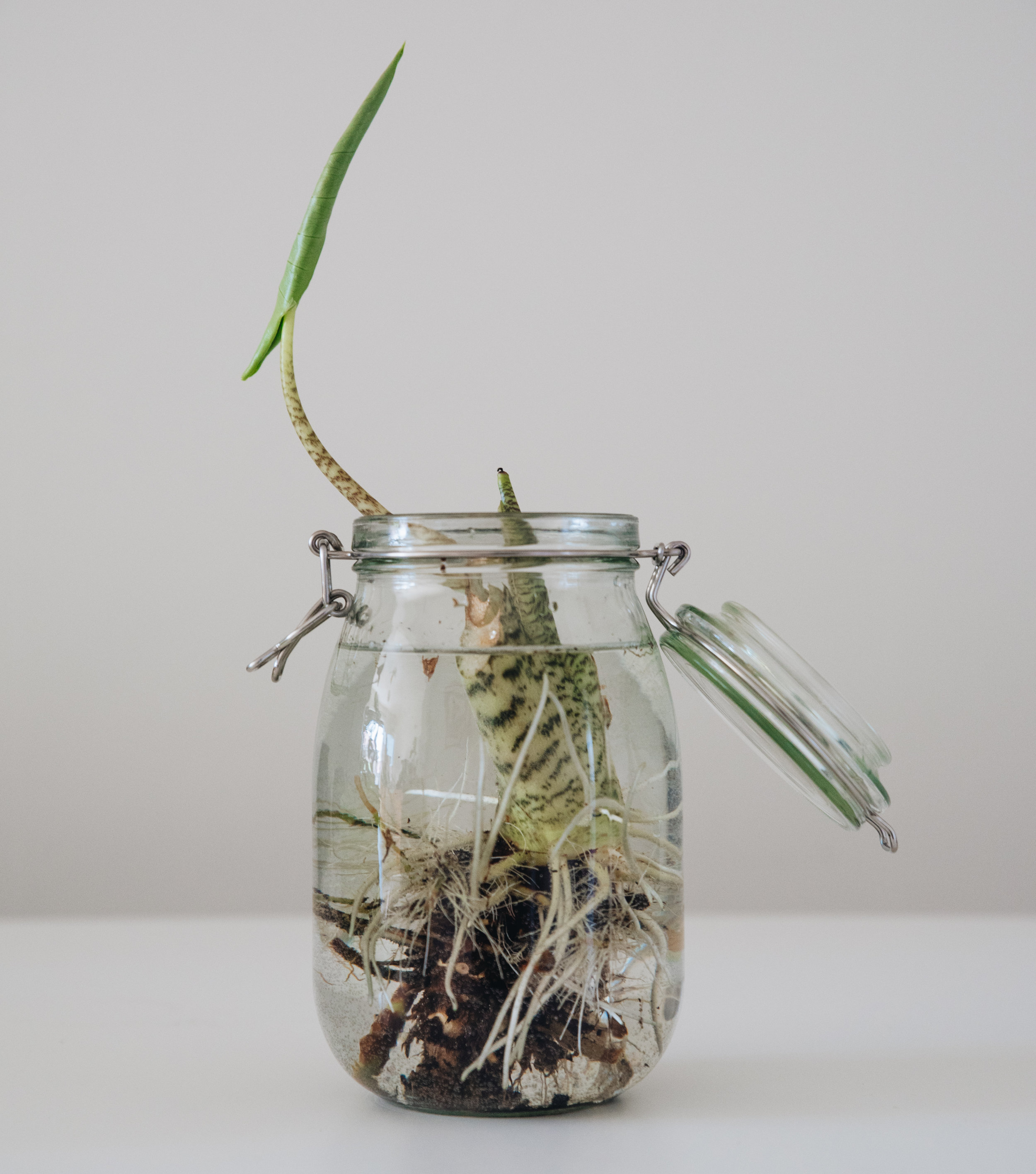I also received questions on Instagram about this plant and method, here are some answers:
Where on the stem do I cut it off, and can I take cuttings?
Do NOT cut off the stem of your Alocasia. If you want to save the plant and put it in water, you need to remove all the soil and put the whole root system in water. Do NOT try to take cuttings from an Alocasia, it will never work. The only way to produce new plants is to get bulbs from the soil, or if a bulb starts growing on its own and a new plant pops up from the soil. You might also
Do you fertilize the water?
No. I’ve never tried adding anything, but I guess you could leave it in minimally fertilized water for a couple of hours or a day, and then change the water? I’m not sure, but I wouldn’t leave it in fertilized water for a long time, it might be too much of a shock for the plant and the water roots.
What about the size of the container?
Don’t worry too much about this if your plant is in water. I would just find a fitting vase/jar that gives the plant enough support around the sides. It needs to be quite tall (I might try to find a new one for mine soon) and not too wide.
How do you keep the corm and the roots from rotting in water?
It simply does not rot in water! Alocasias tend to grow in moist and wet places, for example in the rainforest climate of Brazil. So if you have a true Alocasia, it should be able to handle the wet conditions. However, as I’ve mentioned above, they tend to rot fast and easy in certain mediums, such as coconut coir or very dense potting soil. These roots need oxygen, which they do get even when they’re in water. They don’t get enough of it in dense or very wet soil though. That’s why I recommend putting it in water if you’re having trouble keeping it alive in any other medium.
Am I eventually going to put this plant back in soil?
I don’t know. My Alocasia zebrina seems to thrive and be really happy as it is right now. I might change my mind about it in spring. But for now, and during winter, I’m definitely keeping it in water. And you decide for yourself what you’d like to do with yours. You might just want to use this method to save it from certain death and then when it’s recuperated put it back in soil. That’s fine!
Is Alocasia zebrina toxic to pets?
Just like a lot of other tropical plants, Alocasias are considered toxic to cats and dogs. If you have a pet, you might consider putting your Alocasia in a place where your pet can’t reach it. Or just don’t get an Alocasia.
Checklist:
Make sure your plant is actually an Alocasia of some sort
Remove as much soil as possible, and all rotten roots too
No direct sunlight, but give it plenty of indirect light
Change the water every 7-10 days
Sing Drake to get it to fall asleep every night (kidding)
You’ll have a happy Alocasia in no time!
If you have any further questions, let me know in the comments below or in a direct message on Instagram!
PS. It costs money to keep this website running. Any support you can help out with, however big or small, is greatly appreciated. I now have a Patreon. You can also send any amount you feel like here: paypal.me/upleafting Thank you!










